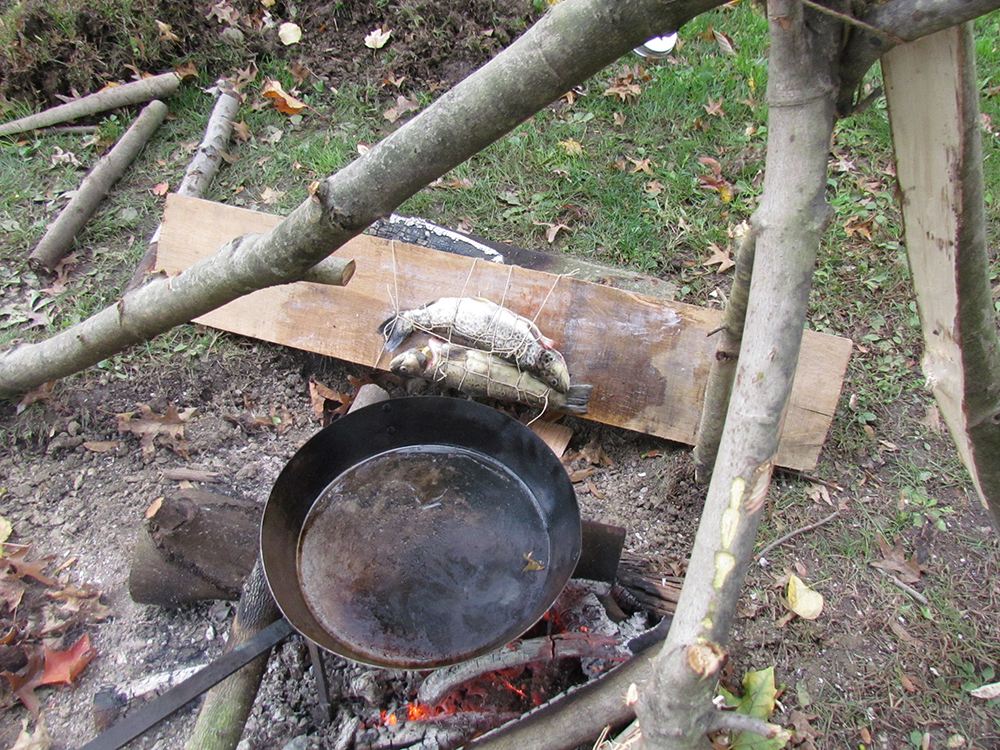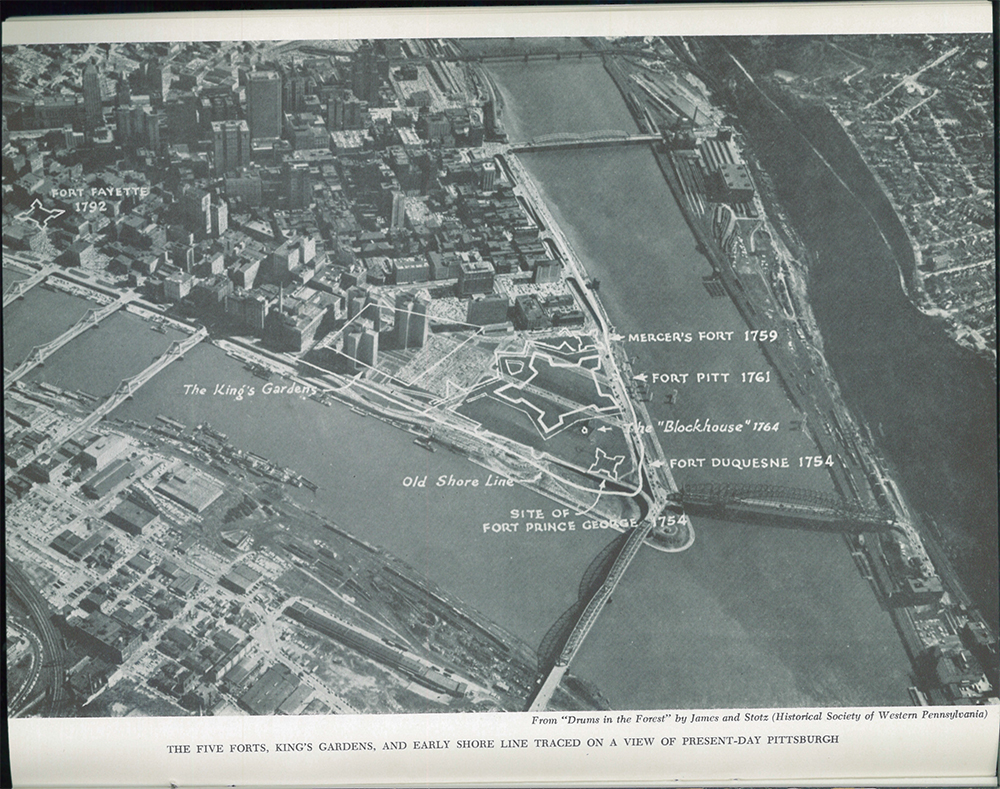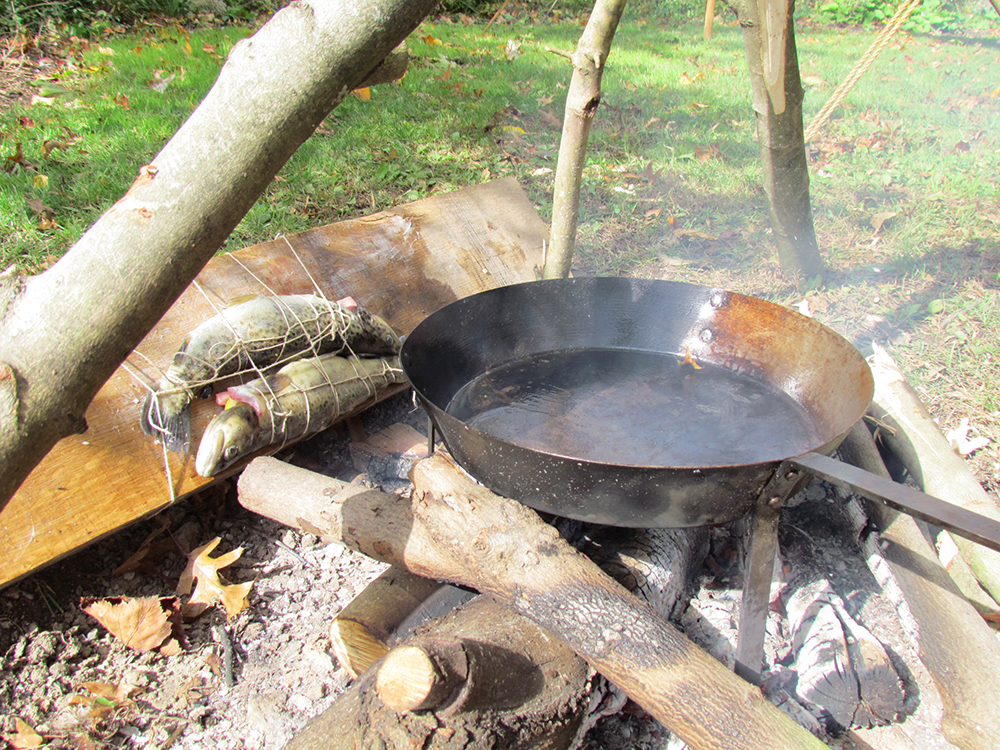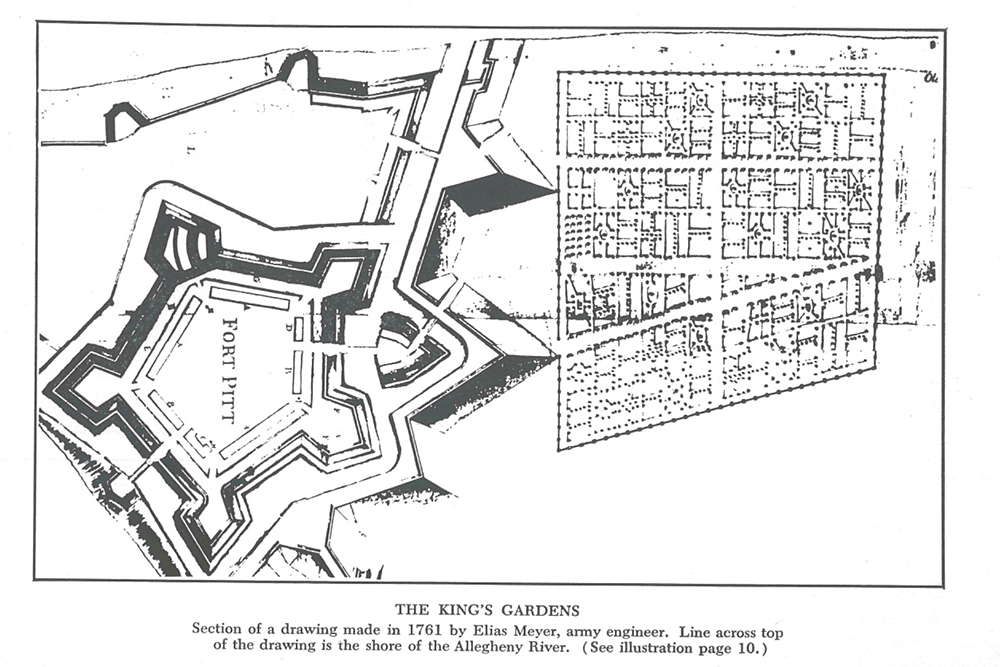
Upon arriving at the Point in late November of 1758, British soldiers were surviving off provisions they had received along their expedition trail. They had embarked from Carlisle, Pa. in mid-May that same year.
The following year, in Dec. 1759, Col. Henry Bouquet recorded the provisions available at Fort Pitt: “146,740 pounds (667 barrels) of flour, 212 beef cattle, 66,415 pounds of salted beef, 22 barrels of pork, 64 barrels of salt, 5,800 pounds of butter, 3,285 pounds of cheese, and 525 pounds of tobacco.”[1]
A soldier’s individual weekly ration would come from what provisions were available. Unfortunately, as was often the case, provisions were inadequate due to the amount of time required to transport the provisions over the mountainous terrain from store houses to Fort Pitt. The provisions for the frontier forts came from metropolitan contractors, from Europe, or from colonies along the east coast of British North America, and then made their way west.
Many of the complaints in The Papers of Colonel Henry Bouquet were about food spoiling. Bouquet wrote to Gen. Jeffery Amherst, commander-in-chief in North America, in March 1759, “the meal of Indian corn carried at so great an Expense by the Country People to Pittsburg, does not keep sweet, & that they have already been obliged to send some back to Ligonier to be used before it spoils.”[2] He wrote again to Amherst from Fort Pitt in March 1762, “We have lost 16218 w. of Flour damaged & Condemned…”[3] This is the modern equivalent of 1,816,416 pounds of flour. Bouquet even wrote to one of the contractors, Plumsted & Franks in Philadelphia, about the lack of adequate food, “The Flour remaining in Store at Fort Pitt, being reported to me as unfit for use, you will please to send with all convenient dispatch to that Post One Hundred Thousand Weight of Fresh Flour, and likewise One Hundred Head of Live Cattle, for the use of the Garrison and Indians.”[4]

While the initial demand for food from the east was high, this demand eventually did subside for Fort Pitt. After a few years, the people at Fort Pitt were able to acquire provisions through other means, such as fishing and gardening. During the spring, summer, and fall, fishing along the Monongahela and Allegheny Rivers provided an abundance of fresh fish, which allowed the salted rations, such as beef and pork, to be conserved for winter.[5] In addition, the first garden at Fort Pitt, also known as the King’s Garden, covered 10 acres and was divided into 77 separate plots, averaging 40 by 90 feet in size. Bouquet requested seeds for cabbage, turnips, carrots, beets, and celery; parsley, thyme, and oregano; as well as pear and apple trees to grow in the garden.[6]
In 1764, Col. John Reid, an officer at Fort Pitt, reported to Bouquet, “The Gardens are extensive and full of Vegetables, which will be more than sufficient to supply the Garrison during the Winter.”[7] Fishing and gardening provided a reliable source of fresh food to the people at Fort Pitt when the status of other provisions was uncertain. Thus, it appears that after about five years, food supplies at Fort Pitt were rather self-sufficient, and they did not rely as heavily on goods transported from the east.
Join the Fort Pitt Museum on Saturday, July 18, for demonstrations of 18th century cooking as part of the Living History program.
Kailey Dunmire is a volunteer intern at the Fort Pitt Museum.
[1] Stotz, Charles Morse. Outposts of the War for Empire, 134.
[2] Bouquet to Amherst, March 13, 1759. The Papers of Colonel Henry Bouquet Vol. 2, 11.
[3] Bouquet to Amherst, March 7, 1762. The Papers of Colonel Henry Bouquet Vol. 2, 76.
[4] Bouquet to Plumsted & Franks, May 18, 1763. The Papers of Colonel Henry Bouquet Vol. 2, 171.
[5]Gaerte, Andrew. “Fishing at Fort Pitt for Food and Fun,” Western Pennsylvania History (Summer 2012), 5.
[6] Stotz. “Fort Pitt gardens fed area’s early settlers.” Pittsburgh Post-Gazette (March 14, 2009).
[7] Reid to Bouquet, September 4, 1764. The Papers of Colonel Henry Bouquet Vol. 14, 118.

